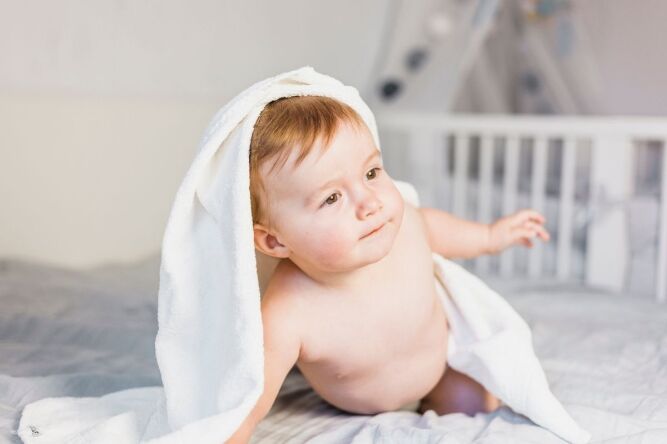Creating a lifelong relationship of trust and health with parents and children starts with understanding the delicate needs of newborn skin.
What is vernix caseosa and why it matters
Vernix caseosa is a naturally occurring protective biofilm composed of sebaceous secretions and dead skin cells that cover the skin of a fetus during the final trimester. According to guidelines by Healthline and the Royal Children’s Hospital, vernix has antimicrobial and moisturizing properties and should not be washed off after birth. Instead, it should be gently massaged into the baby’s skin to help protect against dryness and infections.
First bathing tips for newborns
Why soap should be avoided
The NHS recommends delaying the first bath for at least 24 hours after birth. Full-term, healthy babies should not be washed with antibacterial soaps, which can disrupt the acid mantle and microbial flora. Use only warm water and a soft cloth to clean visible impurities. Excessive hygiene may increase the risk of eczema and allergies.
The “Less is More” approach
Overuse of skin care products on newborns can damage their natural barrier and increase risks of allergies. Therefore, minimal intervention is best. Water and cotton are sufficient for routine cleaning during the first few weeks.
Daily hygiene – safe and simple practices
General guidelines
- Wash your hands thoroughly before any baby care activity.
- Use only warm water and soft cotton gauze or a bath glove.
- Focus on armpits, behind the ears, under the chin, diaper area, and between fingers and toes.
What about eyes, nose, and ears?
Do not clean the inside of the nose or ears. Use boiled water or sterile saline to clean any eye discharge. Avoid using cotton swabs inside any orifice.
Umbilical cord and bellybutton care
The umbilical stump should be kept clean and dry, with airflow to aid natural detachment. According to the American Academy of Pediatrics, alcohol and antiseptic powders are no longer recommended. Clean only if contaminated with feces. Redness, pus, or odor require immediate medical evaluation.
Post-defecation cleaning
Clean the perianal and genital areas using lukewarm water immediately after bowel movements. After the first month, fragrance-free, alcohol-free baby wipes may be used occasionally.
Genital hygiene for boys and girls
Boys
Do not forcibly retract the foreskin. Gently clean with water and cotton pads. Soap may be introduced after the first year if retraction is easy.
Girls
Clean from front to back using a fresh cotton pad for each swipe to prevent urinary tract infections.
Tub bath guidelines
Begin tub baths after the umbilical stump has fallen off. Maintain a room temperature around 24°C and water at 37°C. Use large flat-bottom tubs for comfort. Avoid shampoos unless necessary; if needed, use mild, fragrance-free formulas. Soap must be neutral or mildly acidic (pH ~5.5). Synthetic detergents may be preferred for babies with eczema. Avoid bubble baths entirely as they can disrupt the natural flora and cause infections.
In winter, bathe less frequently to prevent skin dryness.
If the baby cries during bath time, remain calm. Wash only what you can, then wrap and comfort the baby. Try again in a few days with sponge bathing in between.
Best oils and what to avoid
Avoid olive oil due to its high oleic acid content, which may disrupt skin barrier lipids. If needed, use organic almond oil or products formulated for infants.
Diaper rash prevention
Diaper rash is common and may be worsened by antibiotics, new foods, tight diapers, and prolonged exposure to moisture. Prevent rash by changing diapers often and ensuring the area is dry before putting on a new one. Mayo Clinic recommends using zinc oxide-based creams as a protective barrier. If symptoms worsen or include signs of fungal or bacterial infection, consult a pediatrician.
Take care of your baby’s skin and health with LittleDot. Track symptoms, diaper changes, skin reactions, and growth in one place. Consult pediatricians and medical experts directly through the Littledot app – anytime, anywhere.
Download LittleDot for iOS or Android today and enjoy peace of mind from day one.
